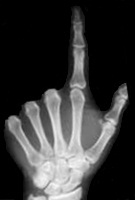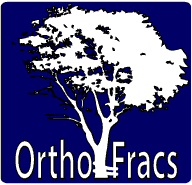Journal Club
February 2010
Outcome Following Open Reduction and Internal Fixation of Open Pilon Fractures
Sreevathsa Boraiah, Travis J. Kemp, Andrew Erwteman, Paul A. Lucas and David E. Asprinio
New York Medical College and the Westchester Medical Center, Valhalla, New York
J Bone Joint Surg Am. 2010;92:346-352
Reviewed by
Dr Emily Kong
MBBS | Accredited Orthopaedic Registrar
Introduction
- Pilon fractures typically occur due to high energy mechanism
- Axial load and shear forces → severe soft tissue injury + comminuted fracture pattern
- Multiple treatment options:
- Open reduction + internal fixation
- External fixation +/- limited internal fixation
- Open reduction + internal fixation
Methodology
- 68 patients with open pilon fracture selected from prospective database of 186 consecutive patients
- Retrospective analysis by one surgeon
- Routine f/up at 1, 3, 6, 12, 26 and 52weeks, then annually
- mean followup 34 months
- Assessment included:
- Subjective evaluation of pain
- Evaluation of medication use
- Physical examination to evaluate soft tissue and ROM
- XR: reduction, stability, alignment, union
- SF-36, modified Mazur scoring system
- Serial debridement performed every 48-72hrs until wound clean
- Early in series, some patients underwent ORIF fibula at time of 1st debridement:
- Practice abandoned: affected definitive approach or malreduced
- Practice abandoned: affected definitive approach or malreduced
- Soft tissue reconstruction performed on day of definitive fixation:
- 17 free muscle flaps
- No rotational or fasciocutaneous flaps
- 17 free muscle flaps
- All patients remained in splint or cast until wounds healed:
- Postoperatively
- Early ROM ankle and ST joint
- NWB for minimum 8 weeks:
- Progressed for FWB up to 12 weeks
- Early ROM ankle and ST joint
- Routine clinical evaluation included:
- Subjective report of pain
- Medication requirements
- Return to work
- ADLs
- Recreational activities
- Subjective report of pain
Statistical Methods
- SF-36 were directly compared with age-matched US norms
- Physical and mental components were individually assessed by using Fisher exact test
- Multivariate regression analysis used to determine significant predictors on infection
- P value ≤0.05 was considered significant
Results
- 52 of 59 fractures united
- Average healing time
- 14 weeks
- 14 weeks
- loss of reduction or fixation based on XR
- none
- none
- Delayed union
- 6 patients BG + revision of internal fixation:
- Impending or established non-union
- All patients had AO/OTA type-C3 injury
- All progressed to union
- Impending or established non-union
- 6 patients BG + revision of internal fixation:
- Amputation
- 1 patient with Grade IIIB injury required amputation after failed free flap
- 1 patient with Grade IIIB injury required amputation after failed free flap
- Deep infection
- 2 patients had deep infection diagnosed on +ve intra-op wound cultures
- 2 patients had deep infection diagnosed on +ve intra-op wound cultures
- Chronic osteomyelitis
- No patients had chronic osteomyelitis
- No patients had chronic osteomyelitis
- Superficial infection
- 3 patients presented with superficial erythema, but no discharge
- 3 patients presented with superficial erythema, but no discharge
- Skin necrosis
- 1 patient developed partial thickness necrosis in their free muscle flap
- Scores
- SF36 = 40.3 points
- Mental Component Score = 54.9
- modified Mazur Score = 44.8
Discussion
- Low infection rate attributable to:
- Aggressive initial debridement and provisional stabilisation
- Routine 2nd look debridement
- Subsequent debridement as needed
- Stable definitive fixation
- Appropriate antibiotic regime
- Aggressive initial debridement and provisional stabilisation
Pros of Study
- Largest reported series of open pilon fractures treated by single surgeon
Cons of Study
- Retrospective review
Take home message
To maximise results in Open reduction and internal fixation of open pilon fractures
- use of staged procedures,
- meticulous soft-tissue management,
- liberal use of temporizing external fixation
- patient-specific approach to fixation and soft-tissue coverage.
Acceptable results can be achieved
Webpage Last Modified:
5 August, 2010



